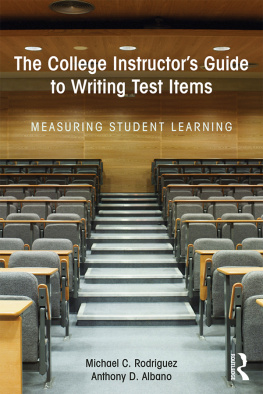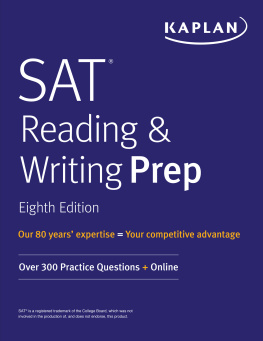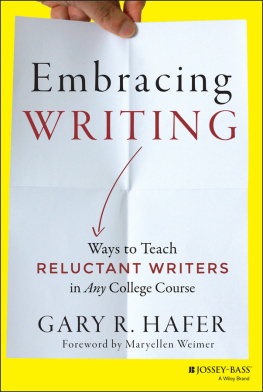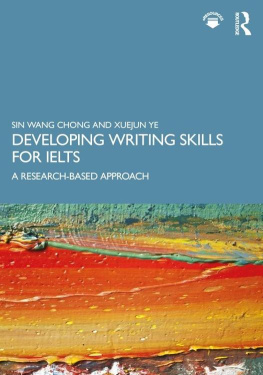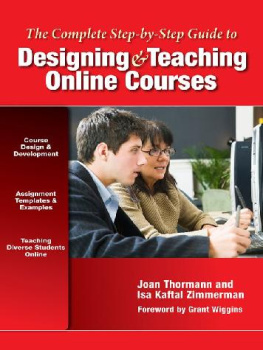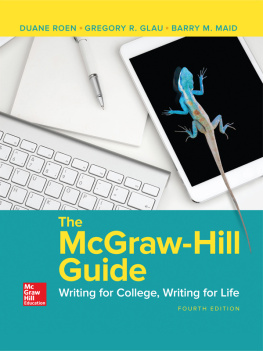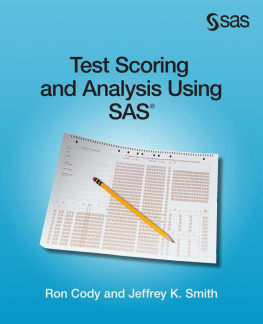First published 2017
by Routledge
711 Third Avenue, New York, NY 10017
and by Routledge
2 Park Square, Milton Park, Abingdon, Oxon, OX14 4RN
Routledge is an imprint of the Taylor & Francis Group, an informa business
2017 Taylor & Francis
The right of Michael C. Rodriguez and Anthony D. Albano to be identified as authors of this work has been asserted by them in accordance with sections 77 and 78 of the Copyright, Designs and Patents Act 1988.
All rights reserved. No part of this book may be reprinted or reproduced or utilized in any form or by any electronic, mechanical, or other means, now known or hereafter invented, including photocopying and recording, or in any information storage or retrieval system, without permission in writing from the publishers.
Trademark notice: Product or corporate names may be trademarks or registered trademarks, and are used only for identification and explanation without intent to infringe.
Library of Congress Cataloging-in-Publication Data
A catalog record for this book has been requested
ISBN: 978-1-138-88652-0 (hbk)
ISBN: 978-1-138-88653-7 (pbk)
ISBN: 978-1-315-71477-6 (ebk)
Typeset in Goudy
by Apex CoVantage, LLC

College instructors, and institutions of higher education in general, are required to assess student learning outcomes for a number of purposes, including everything from grading to reporting to accreditation agencies. But most of us simply want to make sure students are getting itor that our instructional practices are making a difference and helping students understand the subject matterto achieve the learning outcomes intended by the course.
There are a number of books available regarding assessment in higher education. These mostly constitute efforts to contribute to systems-level assessments, as institutions of higher education are required to assess student learning outcomes by accreditation agencies and, in some cases, state legislatures. Some of these texts also contain information and guidance for classroom instructors, but these tend to be embedded in much larger volumes, still with the focus on institutional reporting. Even so, most authors have avoided providing many examples, and no book exists with research-based guidance and examples from multiple fields.
We hope to address the need for direct and clear guidance on item writing by focusing on multiple-choice response items, as they provide the fastest methods of assessing broad ranges of content in many fields. Minute for minute of testing, we get the most information about what students know and can do through carefully constructed multiple-choice items. To support this effort, we provide dozens of example items, some of them flawed, along with their improved counterparts. We also provide additional resources online at proola.org. Proola is a web application that supports instructors in the item development process, with resources for practicing and getting feedback while writing items.
We hope to reach everyone that creates, uses, and interprets assessments in higher education settings.
College Instructors
The intended audience is broadly defined as college instructors. This includes faculty, lecturers, and anyone in an instructor position at an institution of higher education such as a community college, liberal arts college, or comprehensive university, including instructors of undergraduate- and graduate-level courses.
Future Faculty Training Programs
Most comprehensive universities have programs that prepare graduate students for faculty positions. Programs like these are commonly facilitated by centers for teaching and learning. This text provides a deep treatment of classroom test development with examples from a wide range of fields.
Centers for Teaching and Learning
Many colleges and universities have centers for teaching and learning that provide workshops, training opportunities, and resources to support the teaching and learning activities across campus. Many of these centers also provide guidance on classroom assessment, and we have reviewed this guidance from dozens of institutions hosting such resources. This text should serve as a more comprehensive resource to support the development of training programs for college instructors.
Higher Education Researchers
Another important audience includes researchers in the areas of teaching and learning in higher education. The current attention to assessment of learning outcomes has inspired new research on the role of assessment in the higher education classroom. Researchers will find evidence-based guidance on principles of higher education assessment and principles of test item writing (to the extent that such research evidence exists). This will support those researchers creating or using classroom tests in their research and, of course, those conducting research directly on classroom assessment in higher education (if this might be you, please contact us and tell us about your work).
Graduate Students
Finally, another potential audience includes graduate students interested in developing skills as future faculty or future college instructors at any level. Often graduate students are given opportunities to instruct undergraduate courses (and sometimes introductory graduate courses). But they are rarely prepared for the many tasks instructors must tackle, including item writing and test development.
Contents
Guide
We must acknowledge and thank Tom Haladyna, our colleague and mentor. Tom was gracious enough to include us in an item-writing workshop for the National Council on Measurement in Education and in a number of publication opportunities. His extensive experience from research and practice in item writing provide a significant portion of evidence for the guidance presented in this book.
We also acknowledge the many colleagues and students who have contributed to our own understanding of the role of item writing in the college classroom and effective item-writing practices. Some of them have contributed example items throughout this book.
We thank the many contributors to Proola, the online item-development and -sharing tool that will be introduced and accessed throughout the book. Proola provides a way for instructors at all levels to share, edit, and obtain test items in numerous content areas. It promises to provide an important vehicle for a learning community focused on the practice of high-quality item writing. You can access Proola at http://proola.org.
7
Using Test Results to Improve Item Writing, Teaching, and Learning
All of our efforts in writing test items are intended to support the overarching goals of improving teaching and learning. Reviewing student item responses and evaluating test performance can also help us improve the item development process itself, both in terms of improving our ability to write effective items and in terms of improving features of individual items that we might use in the future. These improvements have the potential to inform instruction and learning.
In this chapter, we provide guidance to help you quickly review item responses and make decisions about the quality of individual items. The review process involves examining responses from the highest-performing students and then the frequencies with which incorrect options were selected or incorrect written responses were given. Taken together, this information can confirm that items are not flawed and can inform revising items for future useas well as improving item-writing skills in general.

